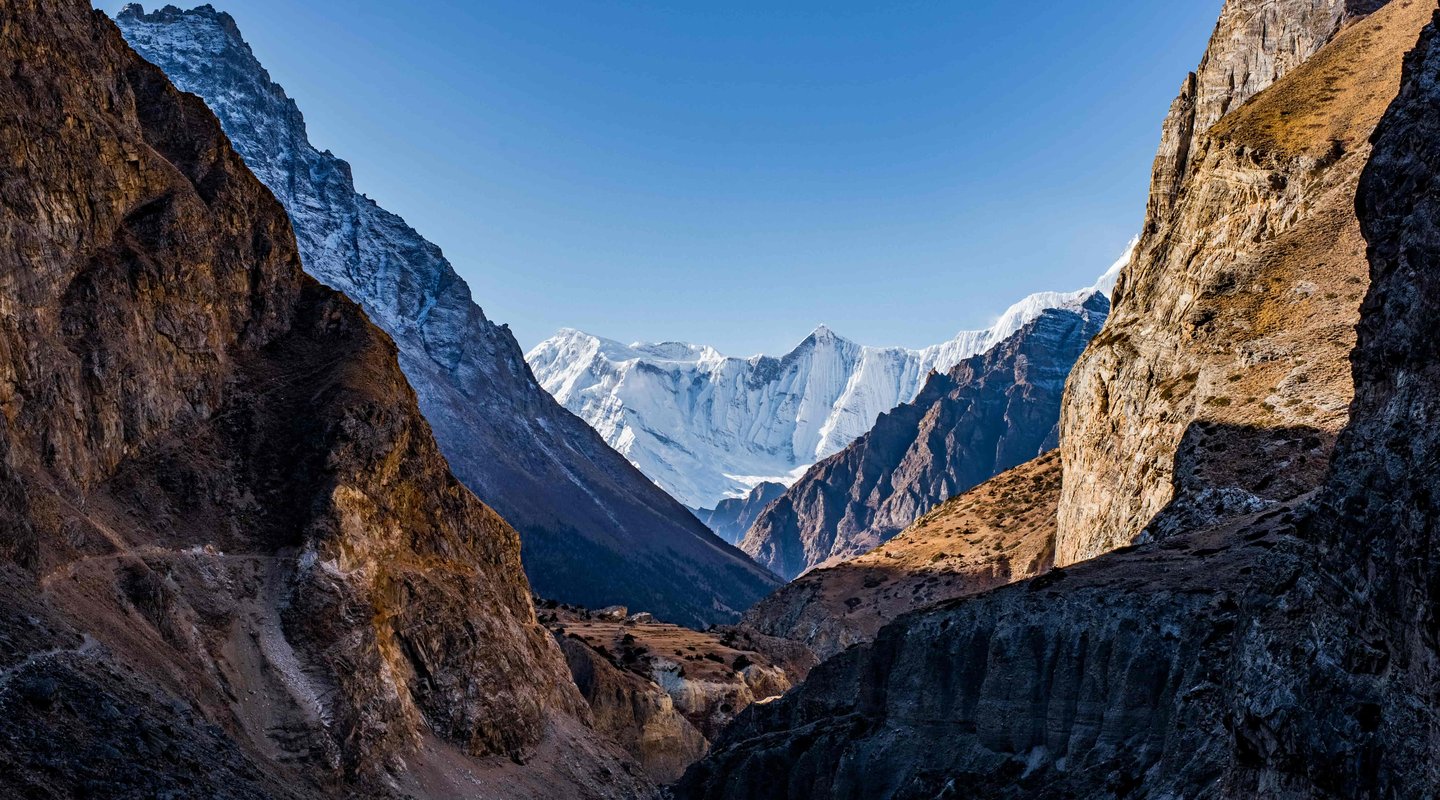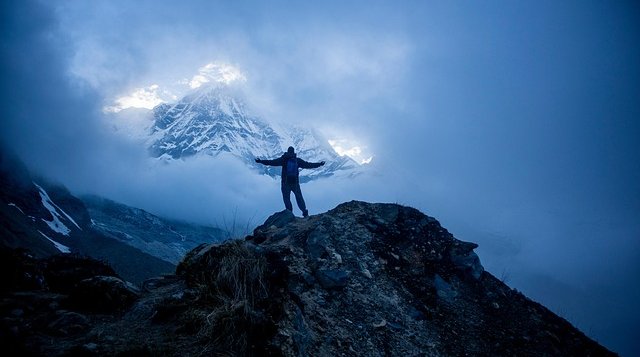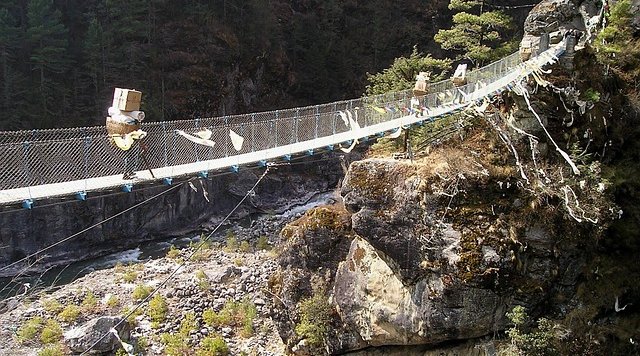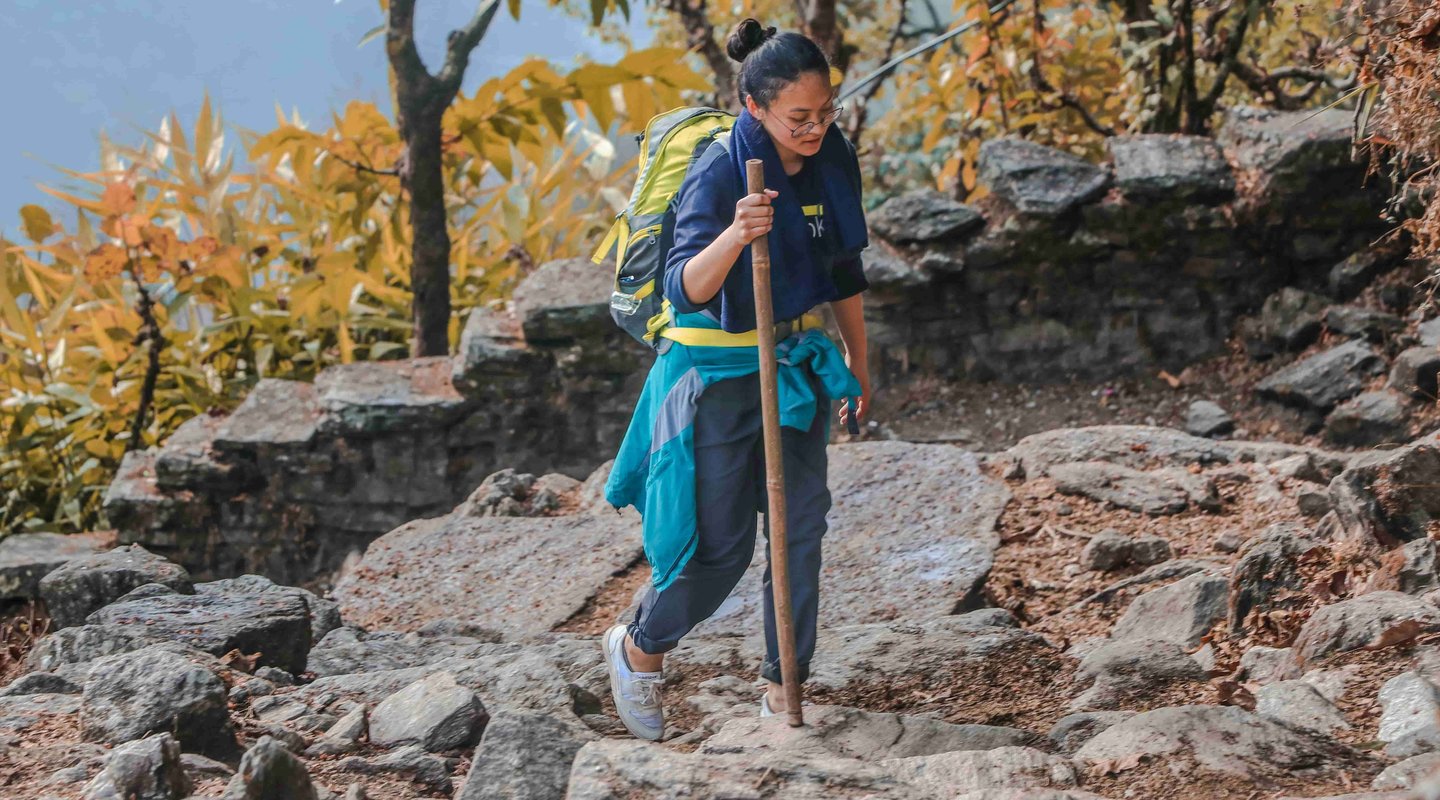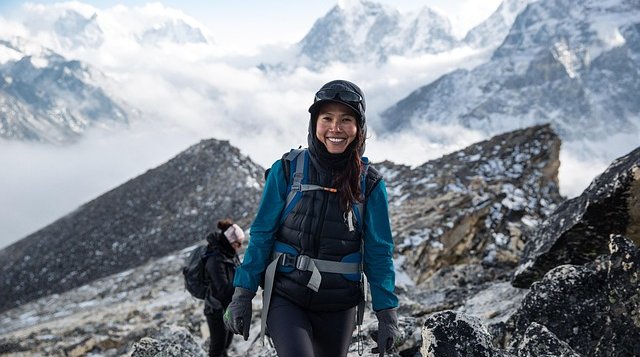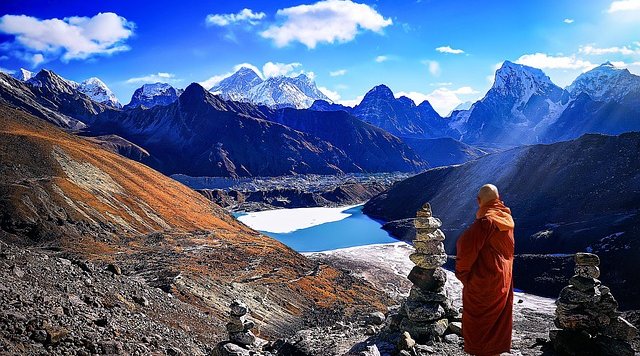The Nar Phu Valley trek requires special permits to enter one of Nepal's most restricted regions, where ancient Tibetan villages remain untouched near the sensitive Tibet border. Unlike popular routes like the Annapurna Circuit, this hidden valley demands a restricted area permit for Nepal, an ACAP permit, and a mandatory licensed guide, making planning essential for beginners.
This comprehensive guide covers everything about obtaining your Nar Phu Valley trek permit for 2025, from costs and application procedures to regulations that preserve these pristine valleys. Whether you're planning your first Himalayan adventure or exploring new territory, you'll find practical information ensuring your trek is both legal and memorable.
Understanding the Nar Phu Valley Permit System
What Makes Nar Phu Valley Special
The Nar Phu Valley exemplifies Nepal's successful conservation model, where special trekking permits safeguard both cultural heritage and natural biodiversity, while ensuring that sustainable tourism benefits reach isolated communities. These valleys opened to foreign visitors only in 2002, making them among Nepal's newest trekking destinations despite their ancient history dating back centuries.
Why Nar Phu requires special permits:
- Protected Tibetan Buddhist culture has remained unchanged since medieval times
- Sensitive international border requiring security monitoring
- Fragile mountain ecosystem supporting endangered species
- Limited infrastructure is unable to handle mass tourism
- Direct revenue stream for remote village development
- Prevention of cultural dilution seen in commercialized areas
- Wildlife corridors for snow leopards and blue sheep
- Sacred sites requiring respectful visitor management
Types of Permits Required
The Nar Phu Valley trek requires two essential permits working in tandem: the Restricted Area Permit (RAP) controlling access to culturally sensitive border areas, and the ACAP permit supporting biodiversity preservation guidelines throughout the broader conservation area. These permits cost more than standard trekking areas but provide exclusive access to Nepal's last untouched valleys, where the Nepal immigration department strictly monitors daily visitor numbers through checkpoint registrations.
Complete permit requirements for 2025:
- Nar Phu Valley Restricted Area Permit (RAP) - Controls border area access
- Annapurna Conservation Area Project (ACAP) permit - Funds conservation efforts
- No TIMS card needed - RAP includes comprehensive trekker information
- Both permits are mandatory - Cannot enter with just one permit
- Agency application only - No independent applications possible
- Guide carries originals - Trekkers keep photocopies
- Children under 10 free - With guardian's valid permits
- Digital backups recommended - Email copies to yourself
Comparison with Other Restricted Areas
Understanding how Nar Phu's permit system compares to other Himalayan restricted zones helps justify costs and appreciate the value offered. While Upper Mustang charges $500 for 10 days and Dolpo requires a similar investment, Nar Phu provides comparable cultural authenticity and mountain scenery at significantly lower cost.
Nepal restricted area permit comparison:
- Nar Phu Valley: $75-100 for 7 days (best value for culture/adventure mix)
- Upper Mustang: $500 for 10 days (easier trekking, desert landscapes)
- Dolpo Region: $500 for 10 days (extreme remoteness, longer commitment)
- Tsum Valley: $40 for 8 days (pure cultural focus, no high passes)
- Manaslu Circuit: $100 for 7 days (challenging circuit trek)
- Kanchenjunga: $20 per week (technical difficulty, fewer facilities)
- Makalu Base Camp: $20 per week (wilderness focus, basic infrastructure)
Detailed Permit Costs and Fee Structure
Nar Phu Valley Permit Cost 2025
The restricted area permit implements seasonal pricing to distribute tourism impact, with peak autumn rates from September-November set at USD 100 for seven days, reflecting ideal weather conditions and maximum visibility. Off-peak December-August periods offer 25% savings at USD 75 for seven days, attracting budget-conscious trekkers willing to face variable weather for authentic experiences with fewer crowds.
Current pricing details:
- Payment currency: USD cash only (no cards or NPR accepted)
- Non-refundable: No refunds for cancellation or early exit
- Per person basis: No group discounts available
- Extension fees: Same rate regardless of season
- Grace period: None - overstay fines apply immediately
- Price validity: Current through December 2025
ACAP Entry Cost and Conservation Impact
The ACAP permit generates crucial funding for environmental conservation fees supporting trail maintenance, waste management, trekking programs, and local community development throughout the Annapurna region. At NPR 3,000 (approximately USD 25) for foreign nationals, this permit represents excellent value considering its multiple-entry validity and direct conservation impact.
ACAP permit details and benefits:
- Foreign nationals: NPR 3,000 (USD 25 at current exchange)
- SAARC nationals: NPR 1,000 (regional cooperation discount)
- Chinese nationals: NPR 1,500 (bilateral agreement rate)
- Validity period: Single trip, multiple entries allowed
- Fund allocation: 60% conservation, 40% community development
- Visible impacts: Trail improvements, waste stations, water systems
- Additional benefits: Healthcare posts, schools, and cultural preservation
Hidden Costs and Total Budget Impact
Beyond official permits, first-time trekkers often underestimate additional expenses that increase total costs by 30-40%, making accurate budgeting essential for avoiding financial stress during trip preparation.
Complete permit-related expenses breakdown:
- Official permits: USD 125-175 (RAP + ACAP combined)
- Agency service fee: USD 50-100 (permit processing and handling)
- Documentation costs: USD 20-30 (photos, copies, attestations)
- Insurance verification: USD 10-20 (required certificates)
- Transportation to offices: USD 10-15 (if self-submitting documents)
- Express processing: USD 50 (if needed within 48 hours)
- Permit protection: USD 5 (waterproof holders recommended)
- Total permit budget: USD 270-365 (all inclusive)
Complete Permit Application Process
Step-by-Step Application Timeline
The permit application process typically requires 7-10 days from initial inquiry to permits in hand, though peak season October applications may need 14 days due to increased demand. Understanding each step helps prevent delays that could jeopardize carefully planned trek dates.
Day 1-2: Agency Selection and Agreement Research registered agencies through the Nepal Tourism Board website, comparing services and reviews. Sign an agreement specifying permit handling, guide provision, and payment terms, including refund policies.
Day 3-4: Document Submission Submit required documents to the agency, including passport copies, photos, insurance, and a detailed itinerary. Agency reviews completeness and may request additional information or clarifications.
Day 5-6: Official Application Agency submits application to Tourism Board with all documents and fees. Officials verify information against immigration records and previous permit databases.
Day 7-8: Processing and Approval Tourism Board processes application, conducting security checks for restricted area access. Approval is typically granted within 48 hours unless complications arise.
Day 9-10: Collection and Verification Agency collects approved permits and verifies all details match submitted information. Final briefing with trekkers includes permit handling protocols and checkpoint procedures.
Required Documents Checklist
Proper documentation prevents application rejection, with Nepal immigration department maintaining strict standards for restricted area access. Missing or incorrect documents cause 40% of permit delays, making thorough preparation essential.
Essential documents for permit application:
- Valid passport - Minimum 6 months validity from trek end date
- Passport photos - 2 recent photos (not older than 6 months)
- Nepal visa - Tourist visa valid for the entire trek duration
- Travel insurance - Must explicitly state 6,000m altitude coverage
- Detailed itinerary - Day-by-day with overnight locations specified
- Emergency contacts - Local and international, with phone numbers
- Medical certificate - Recommended for trekkers over 60
- Agency agreement - Signed contract with payment receipts
Where to Apply: Office Locations and Procedures
Three official locations process Nar Phu permits, each with specific procedures and operating hours requiring careful planning around government holidays and peak season crowds.
Kathmandu - Nepal Tourism Board Located at Pradarshani Marg near Kathmandu Airport, this main office processes 80% of restricted area permits. Operating 9 am-5 pm weekdays except government holidays, expect 2-hour waits during the October peak season.
Pokhara - Tourism Board Branch Lakeside location convenient for trekkers already in Pokhara, operating 10 am-5 pm weekdays. Smaller office means faster processing but limited daily capacity during peak periods.
Besisahar - ACAP Counter Only processes ACAP permits, not restricted area permits, useful for last-minute ACAP needs. Operating 10 am-5 pm daily except Saturdays, located at the trek starting point.
Common Application Mistakes and Solutions
Learning from frequent errors saves time and prevents trek postponements, with these mistakes accounting for 60% of permit delays during peak season.
Critical mistakes to avoid:
- Passport validity - Many forget the 6-month requirement from the trek end
- Old photographs - Using previous permit photos causes rejection
- Insurance gaps - Generic policies lacking altitude coverage specifics
- Itinerary errors - Mismatched dates or incorrect village names
- Payment problems - Bringing the wrong currency or insufficient cash
- Holiday submissions - Not checking the government holiday calendar
- Rush applications - Leaving insufficient processing time
- Agency verification - Choosing unregistered operators
Restricted Area Rules and Regulations
Mandatory Guide Requirements Explained
Licensed guide requirements for Nar Phu Valley ensure both trekker safety and cultural preservation, with guides serving as cultural interpreters, safety managers, and permit handlers throughout the journey. This mandatory guide system provides employment for local communities while enriching visitor experiences through insider knowledge of Tibetan culture and trek traditions.
Comprehensive guide to regulations:
- Licensing requirements - Government certification with first aid training
- Minimum qualifications - 3 years experience, altitude training completed
- Daily responsibilities - Permit handling, accommodation, route finding
- Emergency protocols - Satellite phone required, evacuation coordination
- Cultural interpretation - Translation, monastery access, village interactions
- Cost structure - USD 25-35 daily, plus food and accommodation
- Tipping guidelines - 10-15% of guide fee considered appropriate
- Selection criteria - Check license, insurance, previous client reviews
Group Size Regulations and Solo Traveler Options
Minimum group requirements prevent solo trekking while maintaining an exclusive feel through small group sizes, with creative solutions available for independent travelers seeking Nar Phu experiences.
Group size regulations and workarounds:
- Minimum requirement - 2 trekkers plus a guide is mandatory
- Solo traveler options - Join existing groups or pay double permit
- Maximum recommendations - 12 trekkers optimal for teahouse capacity
- Family considerations - Children count toward the minimum
- Splitting groups - Allowed after permit issuance
- International mixing - Different nationalities permitted together
- Cost implications - Solo surcharge typically USD 75-100
- Finding partners - Facebook groups, agency matching services
Environmental and Cultural Protocols
Strict environmental regulations protect fragile ecosystems while cultural protocols preserve sacred sites and traditional practices, with violations resulting in fines and potential trekking bans.
Environmental Conservation Requirements Pack out all non-biodegradable waste, including batteries and plastic, with checkpoint inspections verifying compliance. Stay on designated trails, preventing erosion, avoid disturbing wildlife, and use established toilet facilities where available.
Cultural Respect Guidelines Walk clockwise around all Buddhist monuments, remove shoes entering homes or monasteries, and dress modestly covering knees and shoulders in villages. Photography requires permission, especially for people and religious ceremonies, with monastery interiors often restricted.
Prohibited Activities: Drone usage requires special permits costing USD 500, with unauthorized flights resulting in equipment confiscation. Collection of plants, stones, or artifacts is strictly forbidden, as is camping outside designated areas or lighting fires.
Checkpoint Procedures and Documentation
Five major checkpoints verify permits throughout the trek, with specific procedures ensuring proper documentation and registration, maintaining security in restricted areas.
Checkpoint locations and requirements:
- Koto (Entry) - Detailed permit verification, registration in the ledger
- Meta (Optional) - Random checks, especially peak season
- Phu Village - Overnight registration, duration verification
- Nar Village - Secondary registration, remaining days calculation
- Kang La Pass - High point registration (weather permitting)
- Ngawal (Exit) - Final verification, exit stamp
- Documentation needed - Permits, passport, insurance proof
- Processing time - 5-15 minutes per checkpoint, typically
Best Time and Trek Logistics
Monthly Weather Guide for Permit Planning
Strategic permit timing based on weather patterns maximizes experience value while avoiding dangerous conditions, with each month offering distinct advantages and challenges for Nar Phu Valley trekking.
Spring Season (March-May) March brings stable weather with minimal precipitation but cold nights requiring warm gear. April offers ideal conditions with rhododendron blooms and warming temperatures perfect for beginners. May sees increasing afternoon clouds but excellent morning visibility and fewer trekkers.
Autumn Season (September-November) September starts with occasional rain clearing to crystal skies and fresh snow on peaks. October delivers perfect conditions with maximum visibility and comfortable temperatures, attracting peak crowds. November brings cold nights but incredible mountain clarity and photography opportunities.
Off-Season Considerations December-February requires full winter gear and crampons for pass crossing with many teahouses closed. June-August monsoon makes trails treacherous with leeches, limited visibility, and landslide risks unsuitable for beginners.
Optimizing Itinerary for Permit Duration
Strategic itinerary planning maximizes restricted area experiences within 7-day permit limitations while allowing proper acclimatization and cultural immersion.
Permit-efficient 12-day itinerary:
- Day 1-2: Kathmandu permit collection and preparation
- Day 3: Drive to Dharapani (outside restricted area, no permit days used)
- Day 4: Trek to Koto (last stop before permit activation)
- Day 5: Enter restricted area to Meta (Permit Day 1)
- Day 6-7: Trek to Phu village and acclimatization (Permit Days 2-3)
- Day 8-9: Phu to Nar village exploration (Permit Days 4-5)
- Day 10: Nar to Kang La Base Camp (Permit Day 6)
- Day 11: Cross Kang La Pass to Ngawal (Permit Day 7 - exit restricted area)
- Day 12: Ngawal to Manang and drive to Kathmandu
Transportation Logistics and Timing
Coordinating transportation with permit dates prevents wasting valuable restricted area days, with various options balancing comfort, cost, and time efficiency.
Transportation options and scheduling:
- Kathmandu to Besisahar - 6 hours by tourist bus (USD 15-20)
- Besisahar to Dharapani - 4 hours by shared jeep (USD 30-40)
- Private vehicle option - 8-10 hours total (USD 250-300)
- Return via Manang - Saves one day, jeep to Besisahar
- Flight alternative - Kathmandu-Pokhara flight adds comfort
- Booking timing - Reserve after permit confirmation
- Buffer planning - Allow one day for transport delays
- Peak season issues - October transport books quickly
Safety and Emergency Considerations
Comprehensive Altitude Management Strategy
Altitude sickness prevention tips become critical above 3,000m, where oxygen levels drop to 70% of sea level, with proper acclimatization protocols reducing incident rates from 50% to under 10%.
Pre-Trek Preparation: Arrive Kathmandu 2-3 days early for initial altitude adjustment at 1,400m. Consider practice hikes around Kathmandu Valley reaching 2,000m elevation, building red blood cell count before the main trek.
During Trek Protocols Ascend maximum 400m sleeping altitude daily above 3,000m, with rest days every 1,000m gain mandatory. Hydrate consistently with 4-5 liters daily, avoiding alcohol completely, which impairs acclimatization.
Warning Signs Recognition Mild symptoms include headache, fatigue, and poor appetite manageable with rest. Moderate symptoms like persistent vomiting or confusion require immediate descent. Severe symptoms, including inability to walk, demand emergency evacuation.
Emergency Evacuation Procedures
Clear emergency evacuation plans save critical time during medical crises, with established protocols ensuring rapid response despite remote location challenges.
Step-by-step evacuation process:
- Initial assessment - Guide evaluates symptoms and severity
- Communication - Satellite phone contact with the agency and insurance
- Authorization - Insurance confirms coverage and payment guarantee
- Helicopter dispatch - Weather permitting, 2-3 hour response time
- Landing zones - Established helipads at Phu, Nar, and Ngawal
- Ground evacuation - Horse transport if weather prevents flying
- Hospital transfer - Direct to Kathmandu International clinic
- Costs involved - USD 4,000-8,000, requiring an upfront guarantee
Insurance Requirements Deep Dive
Comprehensive trekking insurance requirements exceed standard travel coverage, with specific restricted area provisions essential for permit approval and emergency protection.
Critical insurance coverage elements:
- Altitude specification - Must state "trekking to 6,000m" explicitly
- Evacuation coverage - Minimum USD 10,000 helicopter rescue
- Medical treatment - International standard hospital coverage
- Repatriation inclusion - Medical transport to home country
- Trip cancellation - Covers non-refundable permit costs
- Restricted area clause - Specifically mentions restricted zones
- Direct payment - Insurance pays providers directly
- 24/7 hotline - Emergency assistance in multiple languages
Accommodation and Cultural Immersion
Teahouse Standards and Expectations
Understanding teahouse accommodation rules helps set realistic expectations while respecting local customs respect protocols that maintain harmony in remote communities.
Progressive accommodation standards by location:
- Dharapani-Koto - Private rooms possible, attached bathrooms available
- Meta-Phu - Twin sharing standard, squat toilets, solar power only
- Nar Village - Basic rooms, outdoor toilets, limited electricity
- High camps - Dormitory style, minimal facilities, no charging
- Costs involved - NPR 500-1000 per room, increasing with altitude
- Meal requirements - Must eat where sleeping (lodge rule)
- Hot shower availability - NPR 300-500 when available (rare)
- WiFi reality - Essentially non-existent beyond Koto
Deep Cultural Engagement Opportunities
Meaningful cultural exchange enriches trek experiences while supporting local communities through respectful Tibetan culture trek interactions.
Cultural immersion activities:
- Monastery visits - Morning prayers at 6 am open to respectful observers
- Home visits - Arranged through the guide for tea and cultural exchange
- Traditional crafts - Watch yak wool weaving and thangka painting
- Agricultural participation - Help with barley harvest (September)
- Festival timing - Coordinate with local celebrations when possible
- Language learning - Basic Tibetan phrases enhance connections
- Photography projects - Share photos with villagers later
- Reciprocal sharing - Bring photos of your homeland to share
Frequently Asked Questions (Extended)
Can I get Nar Phu permits independently without an agency?
No, independent applications remain impossible as Nepal immigration department regulations require registered agencies for all restricted area permits, ensuring proper documentation and emergency protocols.
How far in advance should I apply for permits?
Apply minimum 14 days before trek departure during peak season (October-November) or 7-10 days during off-peak periods, allowing buffer time for potential delays or document issues.
What happens if I overstay my permit duration?
Overstaying triggers immediate USD 15 daily fines plus additional penalties ranging USD 50-500 depending on violation severity, with serious cases resulting in deportation and future entry bans.
Are permits refundable if I cancel my trek?
Restricted area permits remain strictly non-refundable regardless of cancellation reasons, making comprehensive trip cancellation insurance essential for financial protection against unforeseen circumstances.
Do children need separate permits?
Children under 10 enter free with guardians while those 10+ require full-price permits, significantly impacting family trek budgets requiring careful financial planning.
Can I extend my permit while trekking?
Mid-trek extensions prove impossible, requiring return to Kathmandu or Pokhara for new permits, emphasizing accurate itinerary planning importance before application.
Is the TIMS card required for Nar Phu Valley?
TIMS cards aren't needed as Restricted Area Permits include all trekker tracking information, simplifying documentation requirements while maintaining safety protocols.
What if my permit gets lost or damaged?
Lost permits create serious checkpoint problems, making waterproof protection and digital copies essential, with guides typically carrying originals while trekkers keep photocopies.
Are there daily trekker quotas?
No official quotas exist currently, though natural limitations through cost and logistics maintain sustainable visitor numbers around 50-60 daily during peak season.
Can I combine Nar Phu with Annapurna Circuit?
Yes, combination treks prove popular with single ACAP permit covering both areas, though separate Nar Phu restricted permit still required for valley access.
Download Your Free Nar Phu Permit Checklist
Get our comprehensive permit application checklist ensuring you don't miss any crucial documents or steps in your Nar Phu Valley trek preparation.
Conclusion
The Nar Phu Valley trek permit is your gateway to one of Nepal's last authentic Himalayan frontiers, where ancient Tibetan Buddhist traditions flourish in remote villages untouched by modern development. While securing permits for this restricted area requires advance planning and higher fees than standard treks, these requirements preserve the pristine character that makes Nar Phu Valley extraordinary. Your permit investment directly benefits the resilient communities of Nar and Phu villages, supporting families who maintain centuries-old traditions while stewarding fragile mountain ecosystems. For those seeking genuine adventure beyond Nepal's commercialized routes, this hidden valley delivers unforgettable experiences: discovering medieval monasteries perched on cliffsides, witnessing traditional yak herding practices, and crossing the spectacular Kang La Pass at 5,320 meters with panoramic views few travelers ever witness.
As one of Nepal's top trekking companies, Himalayan Hero Adventures specializes in navigating restricted area permit procedures, ensuring your Nar Phu Valley trek begins smoothly with experienced guides who understand both the terrain and local customs. Start your permit application at least two weeks before departure and prepare for an adventure that justifies every requirement—where medieval stone villages, breathtaking Himalayan panoramas, and profound cultural encounters await those willing to venture into Nepal's remarkable hidden kingdom.
Ready to explore Nepal's hidden gem? Contact Himalayan Hero Adventures today:
📧 Email: [email protected]
📱 WhatsApp: +9779801127073
🌐 Website: himalayanhero.com
Ready to start your Nar Phu Valley adventure? Contact recommended agencies specializing in restricted area permits and begin your journey to Nepal's hidden valleys today.

